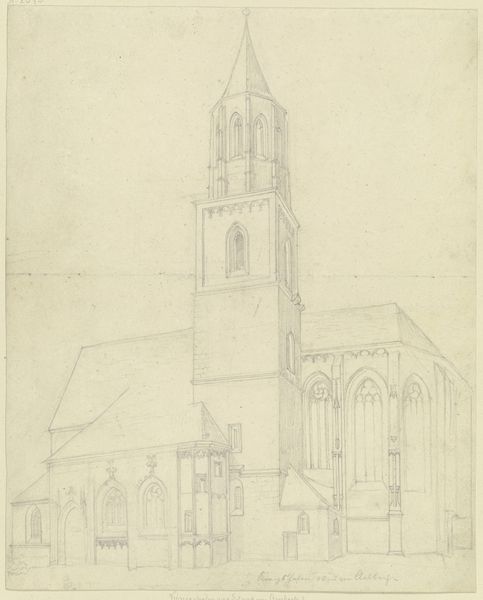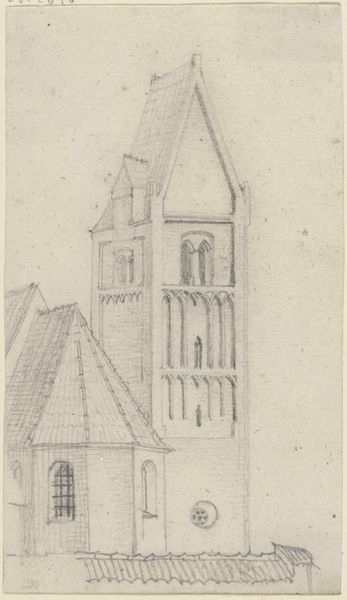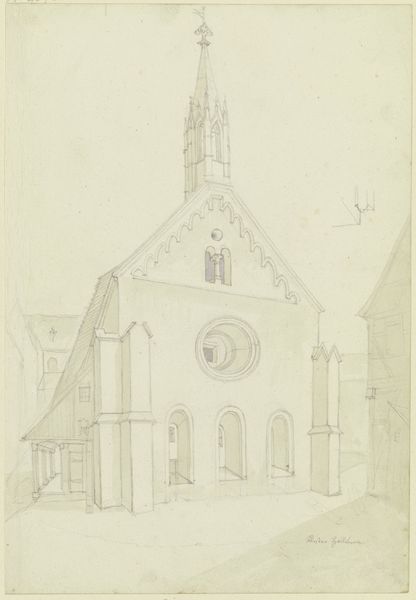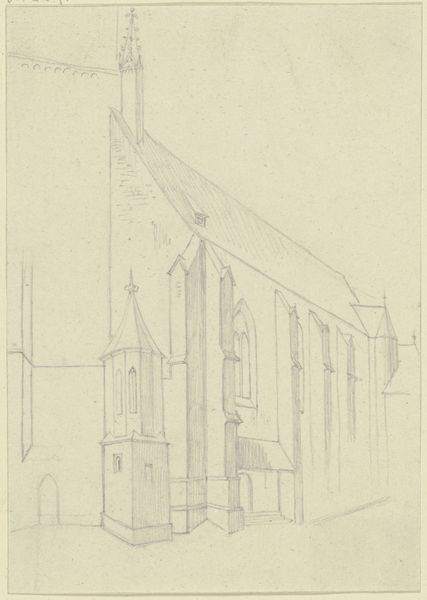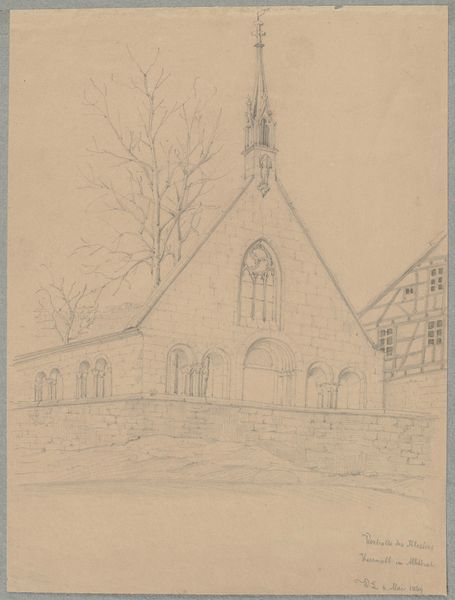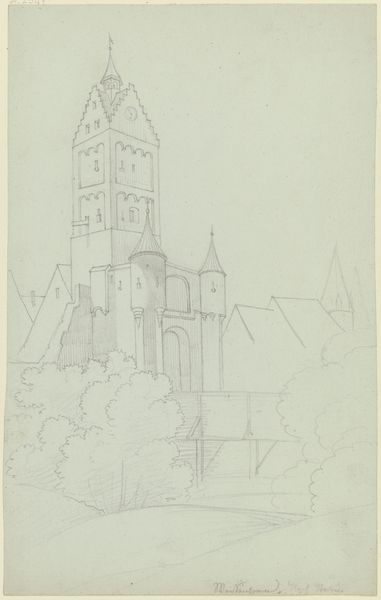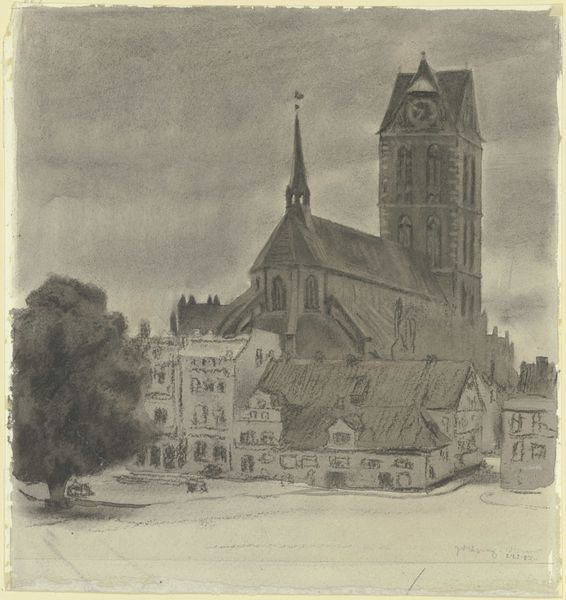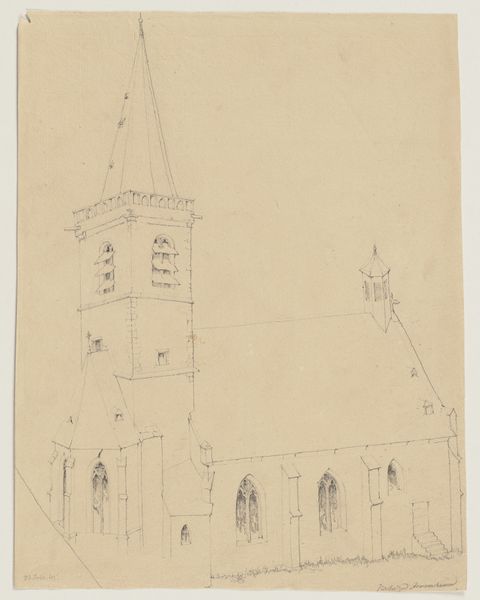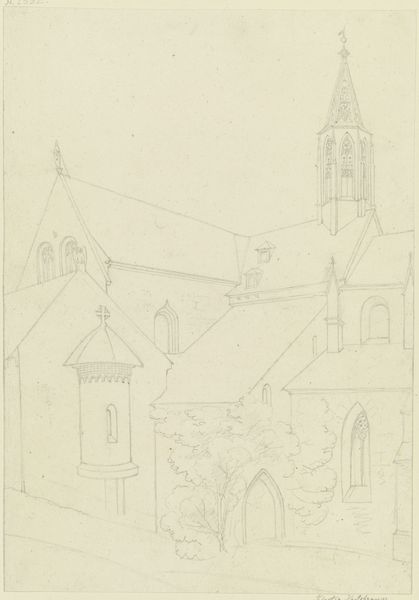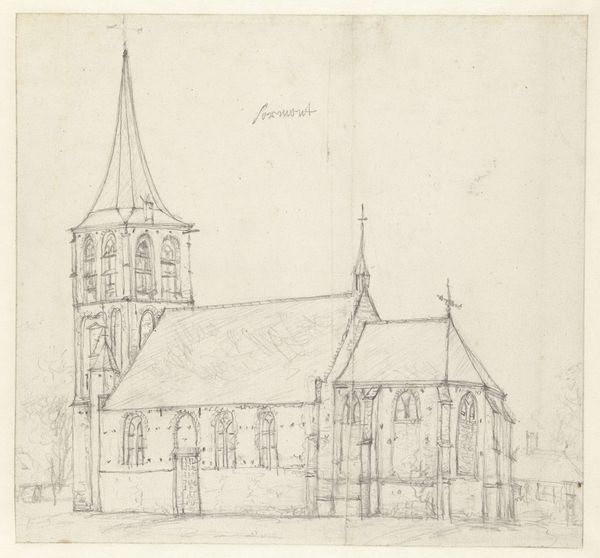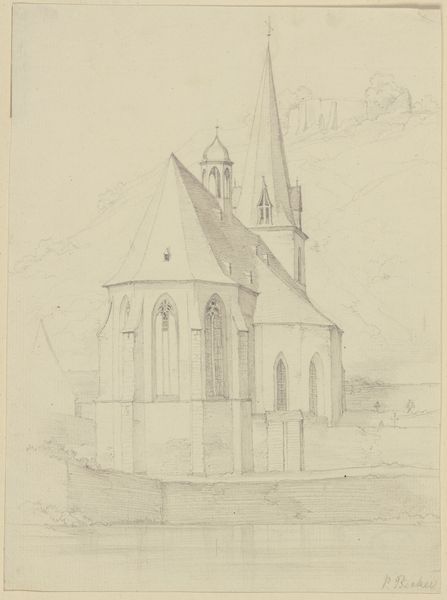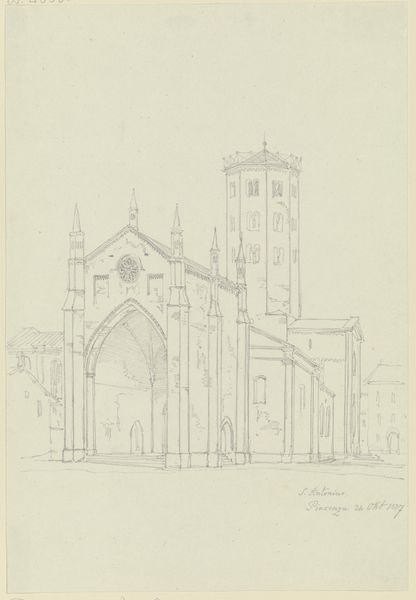
drawing, architecture
#
drawing
#
landscape
#
architecture
#
realism
Copyright: Public Domain
Karl Ballenberger’s pencil drawing captures a church building, likely created during his lifetime in the first half of the 19th century. The image offers insights into the cultural and religious landscape of 19th-century Europe. The architectural style suggests a revival of medieval forms, possibly reflecting the broader Romantic interest in history and the Gothic. In Germany, the church would have held immense social importance, serving not only as a place of worship, but also as a community hub. The precision of Ballenberger’s drawing indicates an academic interest in architectural representation, possibly linked to his training and professional aspirations. The Städel Museum, as an institution, plays a key role in preserving and presenting such works, shaping our understanding of art history. To fully understand the drawing's significance, one would delve into the social history of 19th-century Germany, exploring the relationship between religious institutions, artistic production, and the rise of historicism.
Comments
No comments
Be the first to comment and join the conversation on the ultimate creative platform.
